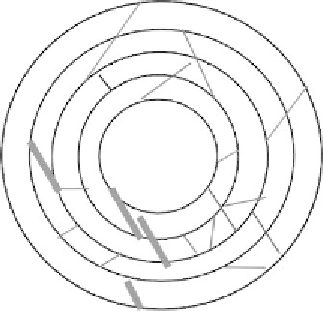what-when-how
In Depth Tutorials and Information
another potential vector of disease spread, which is particularly important in the
case of mass transit. With this individual entity created, it then becomes possible
to place that entity into the working universe to establish a working model, but the
method of establishing and evaluating that data is yet to be determined.
he modeling method that EpiSims uses is based on repeating days with the
same people performing various sets of activities. Running in a loop, a person may
randomly visit various commercial outlets each day while always traveling to work,
and may attend a diferent social event at night. hen a contact network can be estab-
lished to show how disease is spread over time between the different people present at
a given location. his creates a large sum of data that then need to be analyzed.
he analysis of the data is done using a vertex and edge approach. A given vertex
represents a particular individual, while an edge represents the disease transmis-
sion between one vertex to another. he graphical representation used is in the
form of concentric circles where vertices with interconnecting lines are the edges
(Figure 14.1).
here are several diferent attributes that can be drawn from this analysis. he
irst is diameter, or the minimum length along the longest chain formed. his
shows both the spread of a given disease as well as the eiciency of that spread. he
graph can also show the time it takes for a given person to infect multiple people.
Another interesting characteristic that can be drawn is the saturation of disease
spread over time. Because certain people will be infected after a given time interval,
it is likely that transmissions will begin to cluster within certain groups that infect
each other, which will diminish in terms of infection speed as viable candidates
diminish. However, that cluster only needs a single individual to pass infection on
to another cluster. he concept of clusters of people is known as assortativity, and
it can have a strong impact on disease spread depending on how efficiently groups
of people mix.
Figure14.1
Vertexdiagram[1].

